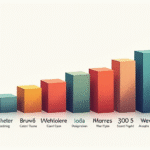Background on OPEC+
The Organization of the Petroleum Exporting Countries (OPEC) and its allies, known as OPEC+, have been a crucial force in shaping global oil markets since their formation in 2016. Comprising nearly half of the world’s oil production, OPEC+ has been responsible for implementing production cuts and increases to stabilize oil prices and maintain market balance.
Recent Developments
On Saturday, OPEC+ agreed to increase oil production by 548,000 barrels per day (bpd) for August. This significant jump marks a substantial acceleration from the monthly increases of 411,000 bpd approved for May, June, and July. Furthermore, it surpasses the 138,000 bpd increase implemented in April.
Key Participants
- The production increase will come from eight OPEC+ members: Saudi Arabia, Russia, the United Arab Emirates, Kuwait, Oman, Iraq, Kazakhstan, and Algeria.
- These countries began reducing their most recent production level of 2.2 million bpd in April.
Reasons for the Increase
OPEC+ cited stable global economic prospects and healthy market fundamentals, including low oil inventories, as reasons for releasing more crude into the market.
Geopolitical Context
The decision to accelerate production increases comes amidst geopolitical tensions following Israeli and U.S. attacks on Iran. These events initially caused oil prices to rise, but subsequently fell, prompting OPEC+ to reconsider its strategy.
Impact on Market Dynamics
Some OPEC+ members, such as Kazakhstan and Iraq, have produced above their targets, frustrating others adhering to the cuts. Kazakhstan’s production has recently returned to growth, reaching a historical high.
OPEC+ aims to expand its market share amidst rising oil supply from competitors like the United States.
Saudi Arabia Raises Crude Prices
In a separate development, Saudi Arabia increased the official selling price of its light Arabian crude to Asian buyers by $2.20 above the Oman/Dubai benchmark, according to a price document reviewed by Reuters.
- The August price increase represents a $1 per barrel rise from July for light Arabian crude, making it the highest since April when it was $3.50 above the Oman/Dubai benchmark.
- Saudi Arabia also raised the August prices for Arabian extra-light and Arabian heavy crude by $1.30 and 90 cents per barrel, respectively.
Market participants surveyed by Reuters anticipated that Saudi crude prices would largely follow market trends.
Key Questions and Answers
- Q: Who are the key players in this OPEC+ production increase decision? A: The eight members—Saudi Arabia, Russia, the United Arab Emirates, Kuwait, Oman, Iraq, Kazakhstan, and Algeria—are responsible for the production increase.
- Q: Why is OPEC+ accelerating oil production increases? A: The decision stems from stable global economic prospects, healthy market fundamentals, and low oil inventories.
- Q: How have geopolitical tensions influenced OPEC+ strategy? A: Following Israeli and U.S. attacks on Iran, oil prices initially rose but then fell, prompting OPEC+ to reassess its approach.
- Q: What is the significance of Saudi Arabia raising crude prices? A: The increase in Saudi Arabia’s official selling prices reflects the country’s intent to align its crude offerings more closely with market trends.






